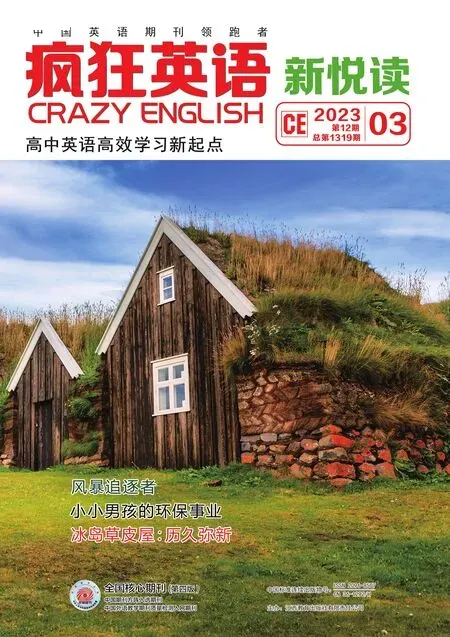中国茶申遗成功
浙江 江 丽
悠久的文化,茶人的匠心,产业的繁荣,文明的交流……这,就是中国茶。

主题语境:历史与传统 篇幅:355词 建议用时:7分钟
1Traditional China's tea-making techniques and their associated social practices were listed as a world intangible cultural heritage, bringing the world's focus on Chinese tea culture again.
2In the application submitted to UNESCO,the function of tea as an ambassador (大使)for spreading traditional Chinese culture and lifestyles to the world and promoting international exchanges is considered one of the most important qualifications (条件;资格)to become a world intangible cultural heritage.
3Tea has been consumed in China for thousands of years, with some of the earliest references to tea drinking dating back to the Shang Dynasty, where it was consumed in what is today Southwest China's Yunnan Province primarily as a medicinal drink.Developing across several dynasties, especially the Tang Dynasty and Song Dynasty, Chinese tea spread across the Eastern Silk Road to Japan and the Korean Peninsula.In the 6th century,envoys (使者) were sent from Japan to China to learn about tea and its associated culture and seeds were brought via the Eastern Silk Road to Japan, leading to the plant being grown in the country.

4Yu Jinlong, a cultural expert specializing in tea, said that as the hometown of tea,China exported its tea to Asian countries through trade and cultural exchanges during the Tang Dynasty.From there, it spread to Europe, the Middle East and the Americas in the 16th century.
5Currently, there are more than 5 billion tea drinkers around the world and more than 120 countries import tea from China.Under the influence of Chinese tea culture, countries including the UK, Japan, the Republic of Korea and Morocco have also formed their own tea culture.
6Tea culture's international influence continues to expand today.According to Yang Feng,one intangible culture inheritor of Chinese white tea in East China's Fujian Province,the tea factory where he works has cooperated with some international organizations to provide“volunteer work exchange”programs for people to study Chinese tea-making techniques.Over the past few years, the program has attracted hundreds of volunteers from more than 10 countries, who live at the tea factory and experience life together with the workers as they pick and make tea, and finally take back what they have learned to their motherlands.
Reading Check
1.What does paragraph 2 mainly talk about?
A.Requirements of becoming a world intangible heritage.
B.Different cultures and lifestyles in the world.
C.Traditional China's tea-making techniques.
D.The international function of Chinese tea.
2.For what purpose was tea consumed at the very beginning?
A.It was a tool for making friends.
B.It was used as a medicinal drink.
C.It was used as a basic ingredient.
D.It was a tool for cultural exchanges among countries.
3.When did China export tea to Asian countries?
A.During the Shang Dynasty.
B.During the Tang Dynasty.
C.During the Song Dynasty.
D.During the Ming Dynasty.
4.Why was the program“volunteer work exchange”set up?
A.To help foreigners learn Chinese customs.
B.To help foreigners know more about Chinese history.
C.To help international volunteers study tea-making techniques.
D.To help international volunteers experience factory life.
Language Study
Useful expressions
tea-making technique 制茶技术
world intangible cultural heritage 世界非物质文化遗产
submit sth to 提交某物给……
spread traditional Chinese culture 传播中国传统文化
promote international exchanges 促进国际交流
the earliest references to tea drinking 饮茶的最早记载
the Korean Peninsula 朝鲜半岛
specialize in 精通;专攻
under the influence of Chinese tea culture 在中国茶文化的影响下
intangible culture inheritor 非物质文化继承者
——一对茶人的婚庆歌

